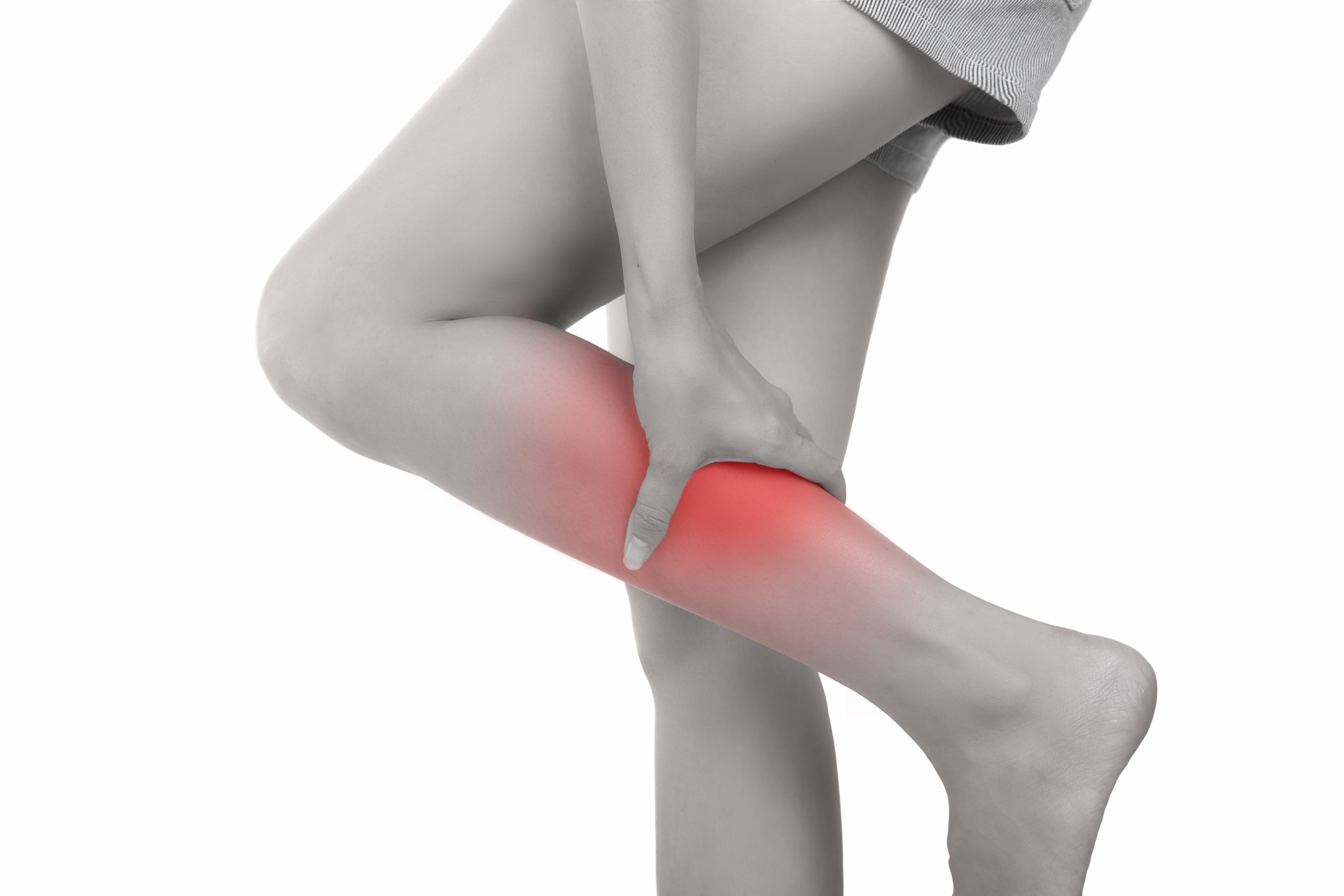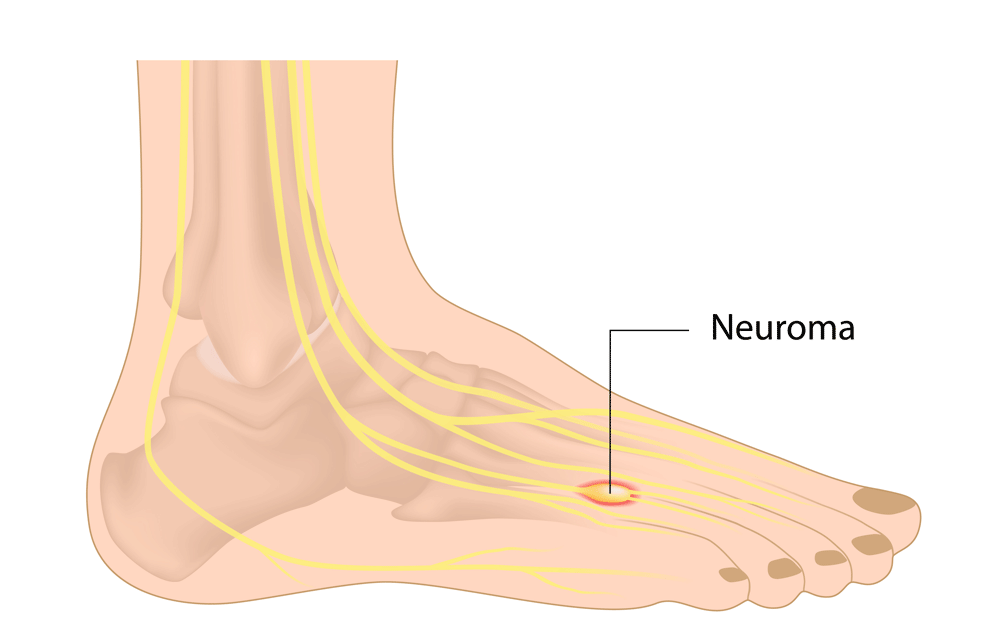The ankle and foot joints can become damaged, causing significant pain and immobility. If damaged by arthritis or a traumatic injury, significant dysfunction occurs, limiting a patient’s mobility.
If you are suffering from foot and ankle injury, come to Performance Pain & Sports Medicine for best-in-class foot and ankle treatment and care.
Often, patients come from other medical practices looking for a solution. We offer fully comprehensive medical care with our advanced medical treatments, including nerve blocks, injections, regenerative medicine and neuromodulation, from our best in class physicians.
Below are the most common conditions that we treat.
Calf Strain: A calf strain happens due to tearing of one or more of the calf muscles, causing pain in the back of the lower leg.
Calf Strains occur due to a sudden contraction of the calf muscle. This happens when the tension is excessive due to too much repetition or high force. The tears can range from a small partial tear whereby there is minimal pain and minimal loss of function, to a complete rupture which may require surgical reconstruction. Commonly a sudden sharp pain or pulling sensation in the calf muscle is felt at the time of injury. Swelling, tenderness and bruising may also be present.

Compartment Syndrome: Compartment syndrome is characterized by pain and muscle tightness in the lower leg; this can be a result of exercise-induced muscle swelling and localized increase tissue pressure.
Compartment syndrome is usually associated with overuse or a sudden increase in activity. It can also be due to biomechanical abnormalities, such as excessive pronation (flat feet) or supination (high arch). Common symptoms include pain, tightness or busting sensation that can progress to chronic pain with excessive activity. In severe cases, patients may experience weakness, pins and needles in the foot, numbness or a 'dead' feeling in the leg that develops with ongoing activity.
Sprained Ankle: A sprained ankle is characterized by damage and tearing of the soft tissue and ligaments of the ankle. The lateral (outside) ligament is the most commonly affected.
An ankle sprain commonly occurs during activities involving jumping and landing, or, activities requiring rapid changes in direction, especially on uneven surfaces. Ankle sprains can range from a small partial tear resulting in minimal pain, to a complete rupture resulting in significant pain and disability. Noticeable pain and swelling generally occur on the outside of the ankle, as well as an increase in pain with certain movements that place the lateral ligaments on stretch.

Metatarsal Stress Fracture: A metatarsal stress fracture is characterized by an incomplete fracture of one of the metatarsal bones of the foot.
A stress fracture of the metatarsal occurs over time with activities such as running, sprinting, jumping or dancing. They often occur following a recent increase in activity or change in training conditions. Pain is typically experienced in the forefoot which increases with impact activities and may decrease with rest. Symptoms may radiate to other areas of the foot, occasionally swelling or discoloration may be noticed at the location of the stress fracture.
Morton’s Neuroma: Morton's neuroma is characterized by localized swelling of the nerve and soft tissue located between two of the long bones of the foot (metatarsals).
Morton’s Neuroma most commonly occurs between the 3rd and 4th metatarsal bones, which can result in pain, pins and needles, or numbness in the forefoot or toes. Common symptoms include sharp, shooting or burning pain, usually at the base of the forefoot or toes, which radiates into the two affected toes.

Navicular Stress Fracture: A navicular stress fracture is characterized by an incomplete fracture in the navicular bone located in the mid-foot at the top of the arch.
A navicular stress fracture occurs over time due to excessive weight bearing activities such as running, sprinting, and jumping. A navicular stress fracture presents with poorly localized pain in the arch of the foot which tends to increase with activity and decreases with rest. As symptoms worsen, a limp during weight bearing activity may be present.
Plantar Fasciitis: Plantar fasciitis is characterized by damage and inflammation to the connective tissue on the sole of the foot forming the inner arch. It is the most common cause of heel pain.
Plantar fasciitis commonly occurs due to repetitive activities, it often occurs in association with a tight calf muscle, inappropriate footwear, or excessive pronation (flat feet) or supination (high arches). Pain with plantar fasciitis usually occurs at the attachment of the plantar fascia to the heel bone. It may cause an ache or stiffness in the plantar fascia or heel that increases with rest (typically at night or first thing in the morning) following activities which place stress on the plantar fascia. Other common symptoms are swelling, tenderness on firmly touching the plantar fascia often on a specific spot on the inner aspect of the heel.

Chronic Tendonitis: Chronic tendonitis means inflammation in the tendons.
Chronic tendonitis in the foot and ankle can be very nagging. A dull ache with movement can cause low grade inflammation and pain, making performing your exercise or activities less enjoyable. When a tendon suffers inflammation and degeneration, it is susceptible to tears and further degeneration. Different treatment options exist depending on whether there are calcifications in the tendon, versus small tears. Expert evaluation will get you on the best path to recovery.
Chronic Plantar Fasciitis: Plantar fasciitis is a very common cause of pain in the heel.
Chronic plantar fasciitis is painful. This condition can cause a host of other problems, due to the pain being on the bottom of the foot, causing a limp or inability to put pressure on the foot when stepping. Inflammation of the band of tissue that runs from the heel to the forefoot can become dysfunctional, making this pain very hard to treat conservatively, especially if it is longstanding. There are a host of treatment options for when this condition becomes chronic.